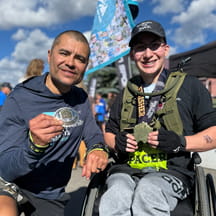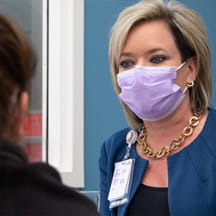It's a scene Jim Leste says he'll never forget.
Standing on the helipad atop Children's Minnesota's Minneapolis campus late May 2020, he overlooked a city ablaze following the death of George Floyd. With hospital operations disrupted amidst the COVID-19 pandemic, Children's Minnesota found itself at the epicenter of last summer's protests in the city.
Its campus sits just blocks away from the site of Floyd's death, the Minneapolis Police Department's 3rd Precinct headquarters and the Hennepin County Courthouse.
Children's Hospitals Today caught up with Leste, M.S., FACHE, CHSP, vice president, operations, Children's Minnesota in Minneapolis, to discuss how the hospital continued to provide care for its patients during the protests while ensuring the safety of families and staff—and how the events of last summer have changed Children's Minnesota's approach to security.
Describe the scene you viewed from the hospital's helipad last May.
It was a surreal moment.
You could look in any direction and see fires—you could see the flames, smell the smoke. We had to adjust our fresh air intakes, so we were not taking in smoke from the gas stations, cars and buildings that were on fire around us. We're only minutes away from the 3rd Precinct, and we could see it being burned to the ground. You could hear the sirens, the gunshots and the yelling from the demonstrators.
It's a sight I'll never forget.
How were you and your team able to not only assure the safety of your families and staff but also sustain hospital operations during this time?
With COVID-19, we were drawn into a global public health crisis. You fast forward to the events that unfolded on May 25 with the death of George Floyd, and we immediately were thrust into what I would call a "global crisis of humanity."
Our goal was to protect our patients. We looked at it from two perspectives: the physical security of our campuses and the mental security of our patients, families and staff.
We watched the increasing tensions erupt. By May 27 and 28, the entire city of Minneapolis was essentially on fire—we knew we needed to respond. We set up an incident command center, so we were running simultaneously two separate command centers—one for COVID and one for the civil unrest response.
The governor implemented a curfew beginning May 29, essentially closing off arteries coming into downtown Minneapolis and Saint Paul. We had employees who were trying to come and go, mothers who were expecting to deliver their babies and other patients who were needing critical care.
Additionally, we had helicopters that couldn't make it to us because they were being targeted with lasers—the pilots essentially weren't able to land safely on our campus. Obviously, that made it extremely difficult.
There are some measures we needed to take quickly and proactively. We boarded up the first floors of four large buildings on our Minneapolis campus. We increased security staffing. To get a sense of the seriousness of our situation, we put out a request to city and state officials for a National Guard presence on our campus.
If you can imagine the scene of three to four military Humvees rolling up to your hospital campus with 14 National Guard members stationed at a children's hospital for a period of several days, it's quite remarkable.
Your short-term response was focused on ensuring safety and continuity. What is Children's Minnesota formulating as a longer-term response to the events of last summer?
We recognized that everyone in our community felt those tragic events personally, so we engaged with the community and staff in a different way. Not everyone has the same perspective on policing, law enforcement and security presence, so we had to understand that balance.
We're extremely fortunate. We made it through the civil unrest with very little impact from a physical safety standpoint. But I think the mental toll on all of us—including our communities of color—continues to this day. We knew we needed to shift gears to understand what the future of our security and law enforcement program needed to look like at Children's Minnesota.
I partnered with our chief diversity and equity officer and went out to our employees with the notion of really listening. We wanted to understand how everybody was dealing with this—and primarily, how our employees of color were doing. We held multiple listening sessions, and they were very difficult conversations.
We met with our Families as Partners participants—we wanted to understand from our families what their thoughts were and what they thought we should be doing. We also met with Minneapolis and Saint Paul police leadership because we essentially are hiring their teams to be on our campuses. We wanted to understand from a police perspective where they were headed.
As a result of all those listening sessions and partnering with our employee research groups and the equity inclusion teams, we made some active changes. We reduced our budget for the law enforcement teams by $230,000. We took a portion of that budget and are planning to use that this year for increased training, community partnerships and opportunities to enhance the overall success of the program.
We are looking at a community advisory program—individuals who would be able to meet with our families and partner with our family liaisons to try to make sure families' needs are being met prior to having any kind of security or law enforcement involvement. We also reduced the amount of coverage our law enforcement teams have on campus following a risk assessment to determine the most impactful times to have them there.
We're just trying to solve problems within our own walls that are much bigger than us but trying to do our part in making that happen. And that doesn't happen without a strong commitment from our executive team and the willingness of many folks in the organization to step into this work. It's difficult work, but we recognize people are hurting—and they need to feel their opinions are influencing our programs.


